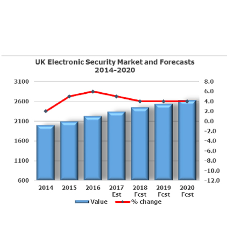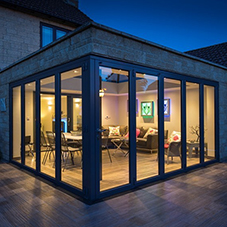Drones have been a big deal in the technology world for a few years now and we have previously explored how they can work in the construction industry but what can drone technology do for security and access control?
According to the IFSEC 2017 security drone report, drones are already more widely used in security than most people realise. According to the report 16% survey respondents reported to have already begun utilising the technology.
They also reported that they expected drone technology to be most useful as a service for businesses, much like access control and intruder alarms. They expected drones to be ideal for businesses that only need them periodically, rather than as a long term system.
Not surprisingly, the main advantage of using drone technology in security is wider CCTV coverage. Standard CCTV is fixed and can only record images from a certain angle, drones are more mobile and able to cover larger distances. This advantage if further increased with the development of unmanned drones that can be programmed to cover certain flight paths or can be operated remotely.
Drones can also offer a birds-eye-view of sites and business premises’, furthering their offering of a more extensive CCTV coverage. With their extended coverage capabilities drones also limit the need for manned security patrols, allowing businesses to save on long term costs.
In terms of access control drone technology can also offer mobile licence plate identification and can also work with intrusion sensor systems to monitor intruder activity quicker than manned security could. Drones can be fitted with thermal cameras that can keep track of a report an intruder’s movements.
Aside from surveillance use drones can be used for a multitude of applications. For example drone technology can be used for risk assessments by offering a previously missed 3D point of view that could potentially expose vulnerabilities and gaps in security systems.
Drones are also a useful tool for maintenance inspections, allowing security and maintenance staff to monitor areas such as roofs more frequently and safely.
Drone technology can be particularly useful in high-risk security areas such as prisons or power stations. They can be programmed to recognise the sound of gunfire or explosions and automatically alert the relevant security forces and emergency services.
These features can also be useful for premises located in areas at risk from natural disasters, offering a solution for quickly locating missing persons or assessing damage during events such as earth quakes or hurricanes.
Despite the advantages of drone technology for security and access control there are still a few limitations. One is battery life, most drones in the market only have a flight time of 25 minutes continuous flight, meaning they are not idea for 24 hour monitoring.
Another is legality. Drones are considered to be aircrafts meaning there are rules and regulations in place to control where and when they can fly, their surveillance features also mean that there is government concern for data protection and privacy surrounding drone use. There is also an increased risk of drone technology being hacked by external sources.
Irresponsibly drone use is also a cause for concern. Correct training must be implemented for businesses to successfully incorporate drone technology into their security system, this costs both time and money to implement.
Commercial drones are a useful and important technological development, especially for security and access control. However, more needs to be learned about the effects of widespread use of drone technology before the market can really take off.
Like this? Check out our Security and Access Systems hub.
Related Blog Articles






